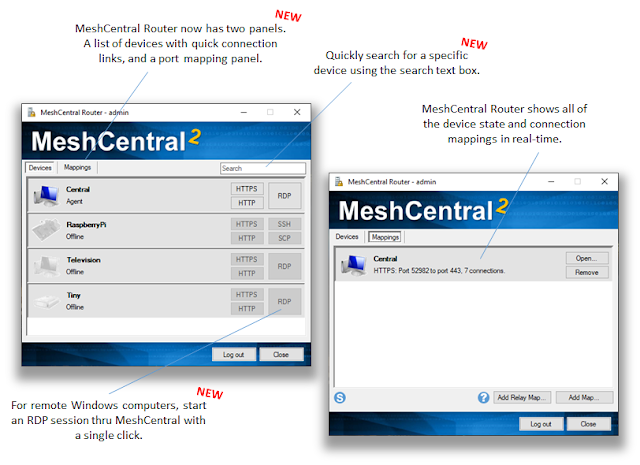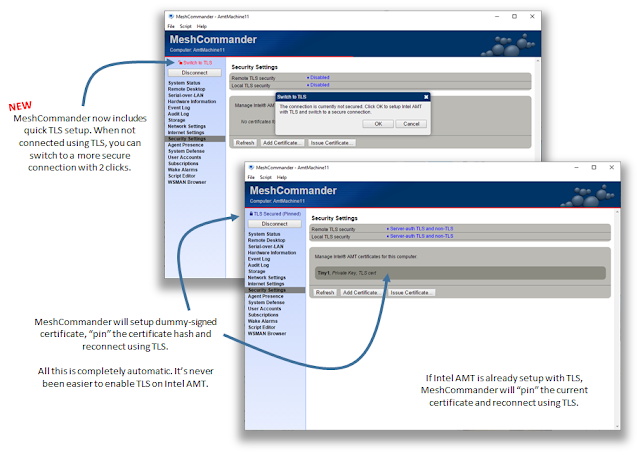MeshCentral - Individual Device Rights, HeapDump

This week a major new update to MeshCentral was published with a single big feature that caused a lot code changes all over the project. Because of this, community testing and feedback is very much appreciated. The big feature is that you can now assign user permissions for individual devices instead of an entire device group. In the past, you created a device group and assigned user rights to that device group. This did not allow individual devices to be singled out. Users have been working about this limitation by creating many different device groups with different user permissions and moving devices between groups. This was far from ideal. Anytime you change the access control system, it’s a big deal as your changing a lot of code. In addition, with this new release a user can be given access to a single device but not the group that this device belongs to. So, the web application needs to deal with how to display this device. A new “Individual Devices” header will now show up w...


